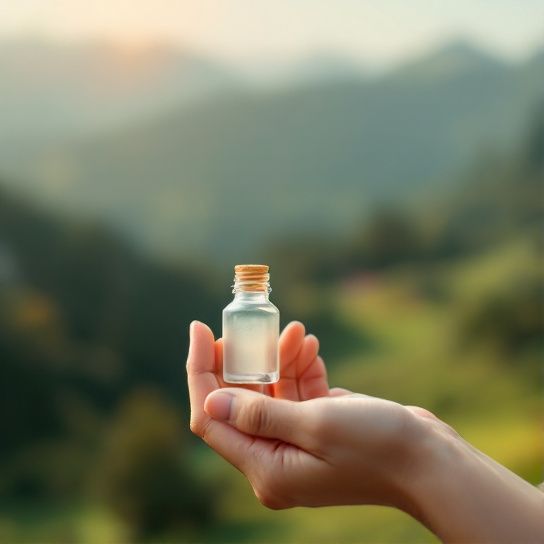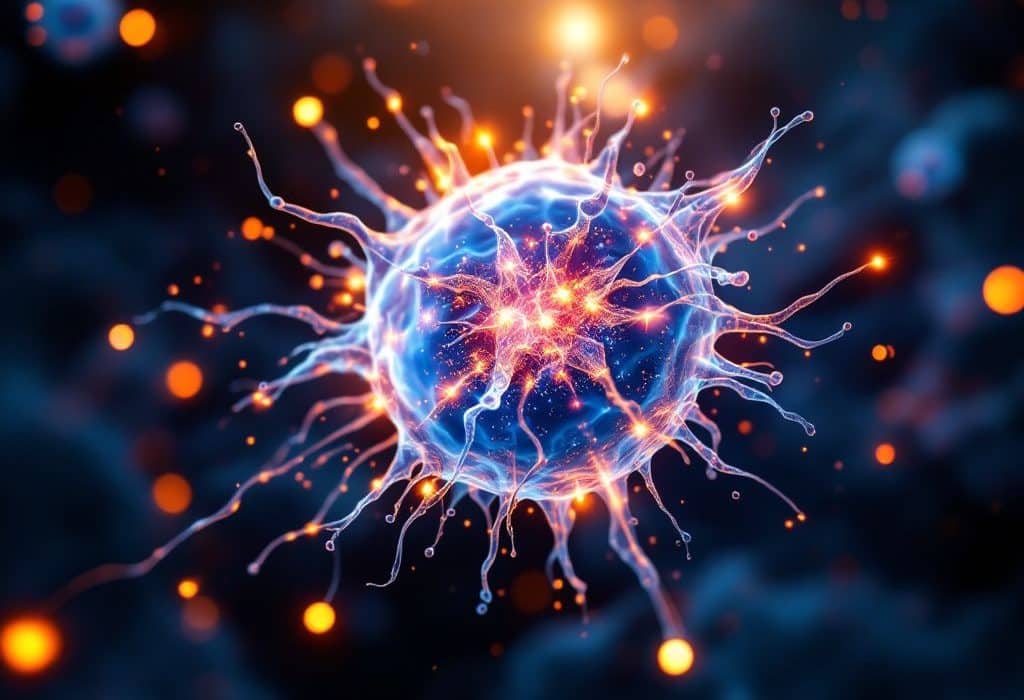Ever feel like you’re dragging through the day despite a seemingly good night’s sleep? It’s like no matter how many cups of coffee you down, your energy flatlines by mid-afternoon and leaves you reaching for that granola bar – and the whole cycle starts again. The usual suspects – stress, busy schedules, or simply the pace of life – are often quick scapegoats. But what if I told you the real energy crisis starts at the cellular level? Yep, right with those tiny powerhouses – your cells.
A Little Background on Cell Energy
Okay, real quick: let’s break down how energy within our cells actually works. So, our cells have these incredible components called mitochondria, also fondly known as the “powerhouses” of the cell. These guys are responsible for taking the food we eat, mixing it with oxygen, and creating a lovely cocktail called ATP (adenosine triphosphate). Think of ATP as the cell’s currency—not Bitcoins, but literally what keeps everything in you running smoothly!
Now, when everything is hunky-dory, fuel in the form of food translates beautifully into energy. But various lifestyle factors can slow down this intracellular merriment, leaving your body devoid of that zestful spark.
Common Culprits Behind Energy Drain
Stress: The Uninvited Fuel Consumer
Stress is an energy vampire. Not only does it crank up your body’s demands, but it makes energy production take a nosedive. Chronic stress taxes your mitochondria, limiting their efficiency, blowing smoke on all your plans to power through the day.
Nutritional Deficits: Empty Tanks

Even with a plate full of kale or quinoa, if your cells aren’t getting the nutrients they need, they simply can’t crank out that ATP like they’re supposed to. Without enough vitamins, minerals, and healthy fats, you’re running on empty.
Poor Sleep: Recharge Delay
Skimping on good rest means your body doesn’t have adequate time to repair or recharge. Think of it as trying to drive on bald tires—sure, you’ll go for a while, but it’s hardly safe or sustainable. Sleep is not just rest; it’s revitalization that prepares your cells for the next battle.
Techniques for Turbocharging Cellular Energy
Let’s Talk Natural Skincare
This might seem like a curveball, but stick with me. Our skin is our largest organ and, interestingly enough, a bunch of the nutrients critical for cellular energy (think vitamins and antioxidants) also play a huge role in maintaining healthy skin. It turns out that giving a little extra love to the skin is like sending a care package to your cells.
- Antioxidants: Here’s a key takeaway—antioxidants fight off free radicals which, aside from mishaps like wrinkles, corrodes energy production. Pow! Think berries, leafy greens, or teal face masks packed with natural goodness.
- Essential Fatty Acids: Omega-3 fatty acids found in fish oil are stellar for your cellular membranes, keeping those cells wall running smoothly—kind of like lube for an engine.
Nutrition: Energize Your Fuel Supply
Plain and simple, what you put into your body lays the groundwork for cellular function. Foods rich in B-vitamins, magnesium, and coenzyme Q10 directly support mitochondrial efficiency and energy output. Nurturing your cells doesn’t mean busting out a supplement bottle necessarily (though with caution, supplements can help), but rather in embracing foods that naturally fill these gaps.

Physical Activity: Not Just Any Movement
Exercise, especially aerobic exercises like jogging or cycling, stimulate mitochondria to grow in both number and efficiency. More mitochondria mean more energy currency. It’s a gracious loop adding activity gradually—your cells ramp up ATP production, and that real energy fuels the mojo to steady on.
Hydration: The Simple Secret
Water transports nutrients to cells and helps flush waste particles out. Good hydration states equate to optimal cellular function. Remembering that cells can’t manufacture energy sitting in a silo—your entire systems’ loop through the body for support takes the village whole.
A Plant Full Approach with Adaptogens
Heard of adaptogens? These nifty plants are nutritional powerhouses that boost resilience and energy by promoting cell power. Consider sipping on some Rhodiola Rosea tea in the morning or adding Ashwagandha to smoothies. Adaptogens help regulate a balanced hormone response to help buffer the negative effects of stress. Try it, personally key to keeping the “low cells charge” warnings away.
Troubleshooting Common Pitfalls
- Caffeine Over-reliance: Sure, your morning joe negotiates immediate alertness. Yet, leaning on caffeine might hike your cortisol levels—a de facto stress hormone—which hampers long-term cellular vitality.
- Processed Foods and Sugars: While convenient, they’re like throwing a fashionable plastic flag into a gas tank. Overly processed diets feed into providing burst-energy. Instead, focus on whole foods that truly power cells over the marathon—fiber-rich grains, colorful fruits, and greens.
- Ignoring Signals: Fatigue sometimes calls for attention; not ignoring these bodily cues often means kneading out-stress poses or even pausing to evaluate diet.
An Invitation to Use Smart Recharge

Listen, revamping your lifestyle doesn’t have to happen overnight. Incremental changes make for the best sustainability. I’m not suggesting you start marathon training tomorrow or nix caffeine cold-turkey. Align actionable steps with your natural rhythm. Maybe it’s upgrading your grocery list one leafy green bag at a time. Be honest with your sleep, honor it, maximize restorative nights. Circadian adherence—trust me on this one—extends energy tenfold. Or simply, become mindful that both exercise and rest weave together your vibrantly energetic web.
Circling back, trial incorporating some small changes, bit by bit. Before long, you’ll notice that the energy trickling into your most sluggish moments will transform beautifully—feeling fresh, productive, and naturally tuned to life’s electromagnetic buzz. Far more fulfilling than that double espresso standby, don’t you think?
Your cells crave enrichment—fuel ’em good and shouldering stress resilient. Embrace a holistic understanding, integrating habits marked with awareness and choices that ripple effectively over time. Who knew the core of vitality rested within scores of hardwork, genuinely something barely larger than the tip of your nose?
Cells might well be merry brainstorming companions to solve a few Earth’s universal, perpetual riddles if only gifted vigor. Enforce enthusiasm in all microscopic couriers—light up the zestful pathway lit by many small, electrical bursts combined as errest, mot successful story ever kept.
Re-burn bridges or misconceptions? Some toast along energy?
All bets—no, systems on free running ignition.
Frequently Asked Questions
What are the benefits of using natural ingredients in skincare?
Using natural ingredients in skincare offers several benefits, including nourishment and hydration, anti-aging effects, and anti-inflammatory properties. Natural ingredients like aloe vera, chamomile, and lavender provide gentle yet effective cleansing and protection for the skin. They are also free from harmful chemicals and toxins, making them suitable for sensitive or allergy-prone skin. Additionally, natural skincare products have a low environmental impact as they are biodegradable and do not contain synthetic additives[1][2][4).
How do natural skincare ingredients differ from synthetic ingredients?
Natural skincare ingredients differ from synthetic ingredients in that they are sourced from plant-based materials and are minimally processed. These ingredients are rich in vitamins, antioxidants, and other beneficial compounds that can nourish and protect the skin. Unlike synthetic ingredients, natural ingredients are generally gentler and less irritating, making them a great choice for those with sensitive skin. Natural cosmetics also tend to have a lower environmental impact[1][2][4).
What natural ingredients are effective for anti-aging in skincare?
Several natural ingredients are effective for anti-aging in skincare. These include aloe vera, jojoba oil, green tea, and rosehip oil. These ingredients help protect the skin from aging by providing hydration, nourishment, and antioxidant protection. They are also free from harmful chemicals and toxins, which can cause damage to the skin over time[1][2][5).
Why are natural skincare products considered more sustainable and eco-friendly?
Natural skincare products are considered more sustainable and eco-friendly because they are made from natural, biodegradable ingredients and do not contain synthetic additives that can harm the environment. These products rely on renewable resources and minimize waste, making them a more environmentally conscious choice compared to conventional skincare products[1][2][4).
References

